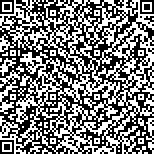姚文平,李明,田卫,等.电针结合长针骶刺法治疗糖尿病膀胱过度活动症的疗效观察[J].中华物理医学与康复杂志,2023,45(8):710-714
扫码阅读全文

|
| 电针结合长针骶刺法治疗糖尿病膀胱过度活动症的疗效观察 |
|
| |
| DOI:10.3760/cma.j.issn.0254-1424.2023.08.008 |
| 中文关键词: 电针 糖尿病 膀胱过度活动症 尿流率 |
| 英文关键词: Electroacupuncture Diabetes Overactive bladder Urine flow rate |
| 基金项目:国家重点研发计划重点项目(2017YFC1703602);南京医科大学康达医药研究院重点项目(KD2020KYJJZD005);江苏省中医药管理局课题(MS2021063);连云港市老龄委课题(L202117) |
|
| 摘要点击次数: 3415 |
| 全文下载次数: 3738 |
| 中文摘要: |
| 目的 观察电针结合长针骶刺法治疗糖尿病膀胱过度活动症的临床疗效。 方法 采用SAS 9.4软件生成随机序列表,将90例糖尿病膀胱过度活动症患者按照随机序列表分为观察组和对照组,每组45例。2组患者均接受糖尿病基础治疗方案,观察组在基础治疗方案基础上增加电针结合长针骶刺法治疗,每周5次,共治疗4周;对照组在基础治疗方案基础上增加琥珀酸索利那新片(5 mg)口服治疗,每日1次,治疗4周为1个疗程。分别于治疗开始前1周和治疗结束前1周,采用排尿日记卡记录平均每日的白天排尿次数、夜间排尿次数,以及1周内的尿急次数和急迫性尿失禁次数。分别于治疗前和治疗结束后(治疗后),采用膀胱过度活动症评分(OABSS)、膀胱过度活动症生活质量调查表(OAB-q)、尿流动力学最大尿流率(Qmax)和平均尿流率(Qave)的变化评估2组患者的小便情况、生活质量改善情况和尿流动力学情况。 结果 治疗后,2组患者的平均白天排尿次数和夜间排尿次数、1周内的尿急次数和急迫性尿失禁次数、OABSS评分、OAB-q评分、Qmax和Qave与组内治疗前比较,差异均有统计学意义(P<0.05),且观察组的白天排尿次数、夜间排尿次数、1周内尿急次数、OABSS评分、OAB-q评分、Qmax和Qave均显著优于对照组(P<0.05)。治疗后,观察组患者的Qmax和Qave分别为(18.02±1.60)和(9.79±1.26)ml/s,分别与组内治疗前[(12.14±1.09)和(7.21±0.95)ml/s]和对照组治疗后[(16.97±1.25)和(8.85±0.96)ml/s]比较,差异均有统计学意义(P<0.01)。 结论 电针结合长针骶刺法能明显减少糖尿病膀胱过度活动症患者的排尿次数,改善患者尿急和急迫性尿失禁等症状,可明显改善尿流率,提高患者生活质量。 |
| 英文摘要: |
| Objective To observe the clinical efficacy of combining electroacupuncture with long needle sacral nerve acupuncture in the treatment of diabetic overactive bladder. Methods A total of 90 patients with diabetic overactive bladder were randomly divided into an observation group and a control group, each of 45. In addition to the basic treatment for diabetes, the observation group received electroacupuncture combined with long needle sacral nerve acupuncture 5 times a week for 4 weeks, while the control group was given 5mg of oral solinax succinate once a day as a course of treatment. One week before the beginning of the experiment and one week before its end, urination diary cards were used to record the average number of times of daytime and nighttime urination daily, as well as any urgent urination and urinary incontinence during the week. Bladder overactivity syndrome score (OABSS), the bladder overactivity quality of life questionnaire (OAB-q), maximum urine flow rate (Qmax) and mean urine flow rate (Qave) were employed to quantify urination status, life quality and the urodynamics of the 2 groups before and after the treatment. Results After the treatment, significant improvement was observed in the average weekly incidence of daytime and nighttime urination, of urgent urination and of urinary incontinence. The average OABSS, OAB-q, Qmax and Qave scores improved in both groups, but the experimental group showed significantly better improvement than the control group. Conclusion Electroacupuncture combined with sacral nerve needling can significantly reduce the frequency of urination, relieve the symptoms of urgent urination and incontinence, and improve the rate of urine flow, improving the life quality of patients with diabetic overactive bladder. |
|
查看全文
查看/发表评论 下载PDF阅读器 |
| 关闭 |
|
|
|